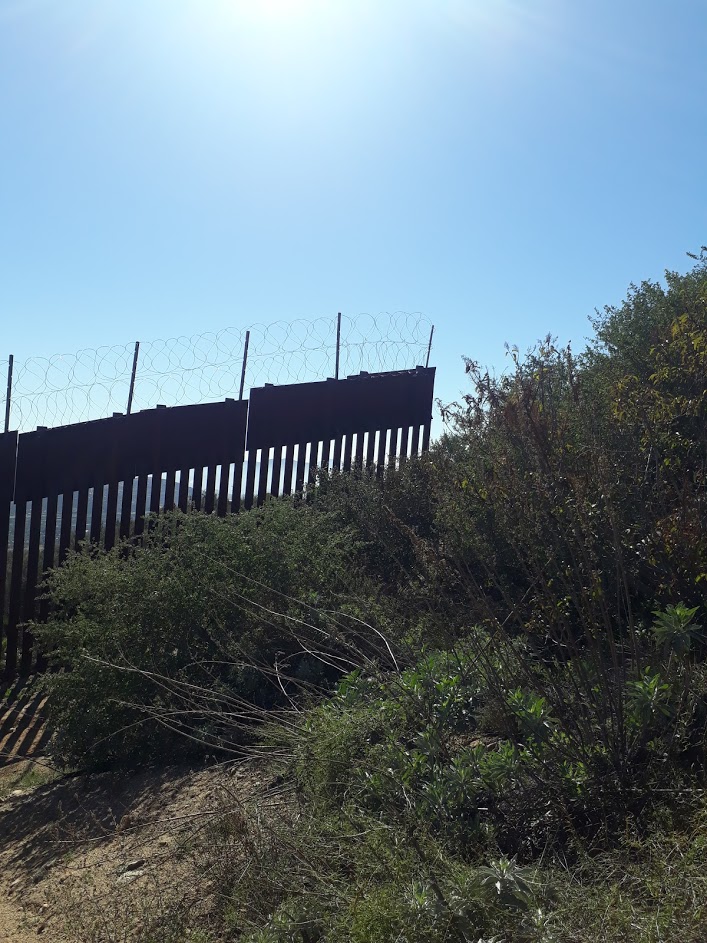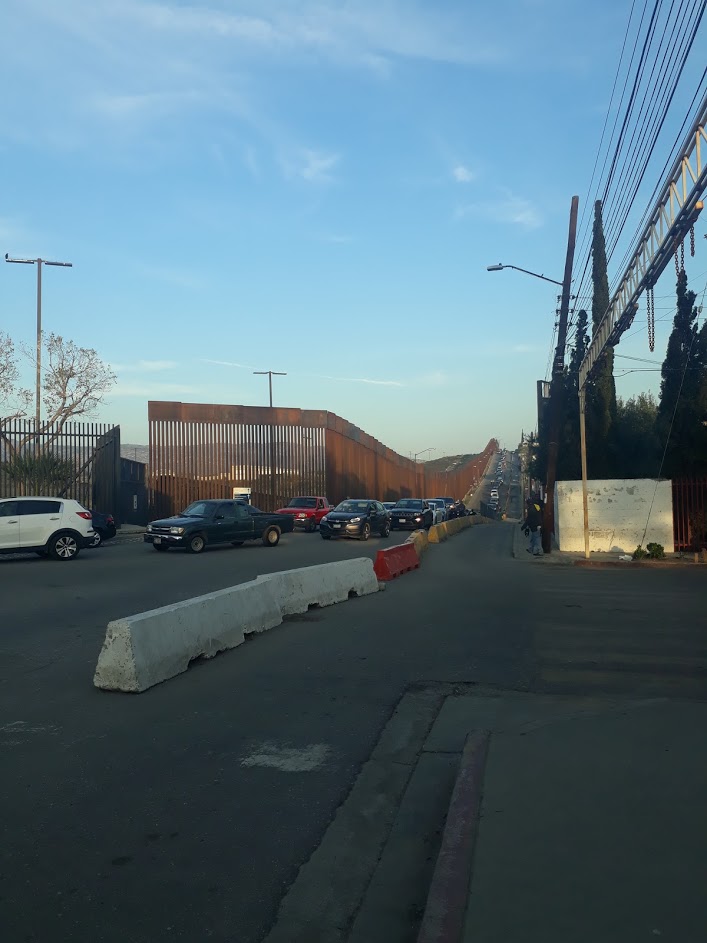B O R D E R S
2019 - 2020 ongoing | Research & Aid |The so called US/MX borderThis is documentation of ongoing on the ground research of different manifestations of borders. Pictured here is one of the
more tangible, obvious and direct forms: the USA / Mexico border.
I have been going to migrant routes with experienced aid groups to drop off survival supplies and pick up anything left behind. Together we observe how the physical manifestations of the border are changing, as well as any traces left behind to get a better idea of what migrants might be facing & what they might need for a safe journey to asylum.
On these particular routes we observed how in more visible areas the border took the shape of a wall, while in other more remote and dangerous areas, it ceased or took the shape of permeable pillars. Seeing this upclose exemplified the ways spatial design can be weaponized to deter and redirect people to more dangerous paths.
I have been going to migrant routes with experienced aid groups to drop off survival supplies and pick up anything left behind. Together we observe how the physical manifestations of the border are changing, as well as any traces left behind to get a better idea of what migrants might be facing & what they might need for a safe journey to asylum.
On these particular routes we observed how in more visible areas the border took the shape of a wall, while in other more remote and dangerous areas, it ceased or took the shape of permeable pillars. Seeing this upclose exemplified the ways spatial design can be weaponized to deter and redirect people to more dangerous paths.









M O N U M E N T S
2019 - 2020 ongoing | Research | NationalThis is ongoing collection & research on the nature of public memory & how narratives are shaped publicly & though build environments in the USA. Pictured are only some of the memorials I’ve visited. Ultimately my objective is to illuminate how these memorials [whether in the form of plaques or entire buildings] hold ghosts of bodies, labor, ideologies, and extraction of materials from land.
This year I am focusing on the state of California. I am traversing time and space, traveling from the south at the Mexico border, to the various detention centers, past internment camps turned national monument [such as the WWII Japanese internment camps at Manzanar], to the Spanish Mission buildings all along the coast. Although geographically spread out these physical spaces represent many different moments across time that still affect us today. They represent how the disconnection of people can happen through the promotion of ideologies related to citizenship, war, & sovereignty. By examining how the narratives are publicly told, we can begin to excavate more of the truth & pathways to healing.
This year I am focusing on the state of California. I am traversing time and space, traveling from the south at the Mexico border, to the various detention centers, past internment camps turned national monument [such as the WWII Japanese internment camps at Manzanar], to the Spanish Mission buildings all along the coast. Although geographically spread out these physical spaces represent many different moments across time that still affect us today. They represent how the disconnection of people can happen through the promotion of ideologies related to citizenship, war, & sovereignty. By examining how the narratives are publicly told, we can begin to excavate more of the truth & pathways to healing.
Monuments & their memories explain my inheritance of the “WHY?”.
Why do I believe what I do? [inheritance from parents and ancestors].
Why are things the way they are?
[inheritance from systemic power structures].
Returning to the “WHY?” is returning to my power to shape change.
The answers trace shapes of lineages,
which I can decide whether or not I want to continue.
Our monuments and memory are not just what we inscribe on stone,
relief on metal, or erect buildings to hold relics in.
They are living and breathing
the firing of synapses...muscle memory...patterns of behavior...
The work of memorializing and remembering assists in the work of
engaged grief, of engaged gratitude,
of realigning our bones and fascia,
of building braver in truth and reverence...
the work done and yet to be done.

A plaque outside Wadsworth House at Harvard University in Boston, commemorating Titus, Venus, Juba & Bilhah, enslaved persons working under Harvard presidents. A small discreet reminder that unacknowledged slave labor was foundational to building the most powerful and rich institutions in America.
Sign looking towards the Mississippi River in New
Orleans describes slaves from greater Senegambia,
the Gold Coast and Bight of Benin being
foundational to “the development of Louisiana”. It also describes the passage averaged around 60
days and that many slaves died on the journey due to malnutrition, disease or violent suppression of onboard rebellions.
Orleans describes slaves from greater Senegambia,
the Gold Coast and Bight of Benin being
foundational to “the development of Louisiana”. It also describes the passage averaged around 60
days and that many slaves died on the journey due to malnutrition, disease or violent suppression of onboard rebellions.

Oñate Monument in Alcalde, New Mexico.
He was a Spanish Conquistador known for his
excessive violence and massacre of the Acoma
people in 1599. No mention of this violent history
was found here.
He was a Spanish Conquistador known for his
excessive violence and massacre of the Acoma
people in 1599. No mention of this violent history
was found here.

A plaque commemorating a former sight of
Japanese internment in Santa Fe, New Mexico. It is the only reminder left of the internment camp left in what is now a dog park.
Japanese internment in Santa Fe, New Mexico. It is the only reminder left of the internment camp left in what is now a dog park.
Plaques at the Mission historical park in Santa Barbara with mention of unnamed indigenous labor as builders of the extensive water works [upper and lower aqueducts & reservoirs], filtration system, grist mill, tannery, and pottery under the direction of “Padres”. No mention of the implications of that or slavery.

A sign describing the largest Native American revolt known as the “Pueblo Revolt” of 1680 at the Spanish Mission of Pecos Pueblo in New Mexico. The narrative of indigenous resistance is included here unlike the
Mission in Santa Barbara.